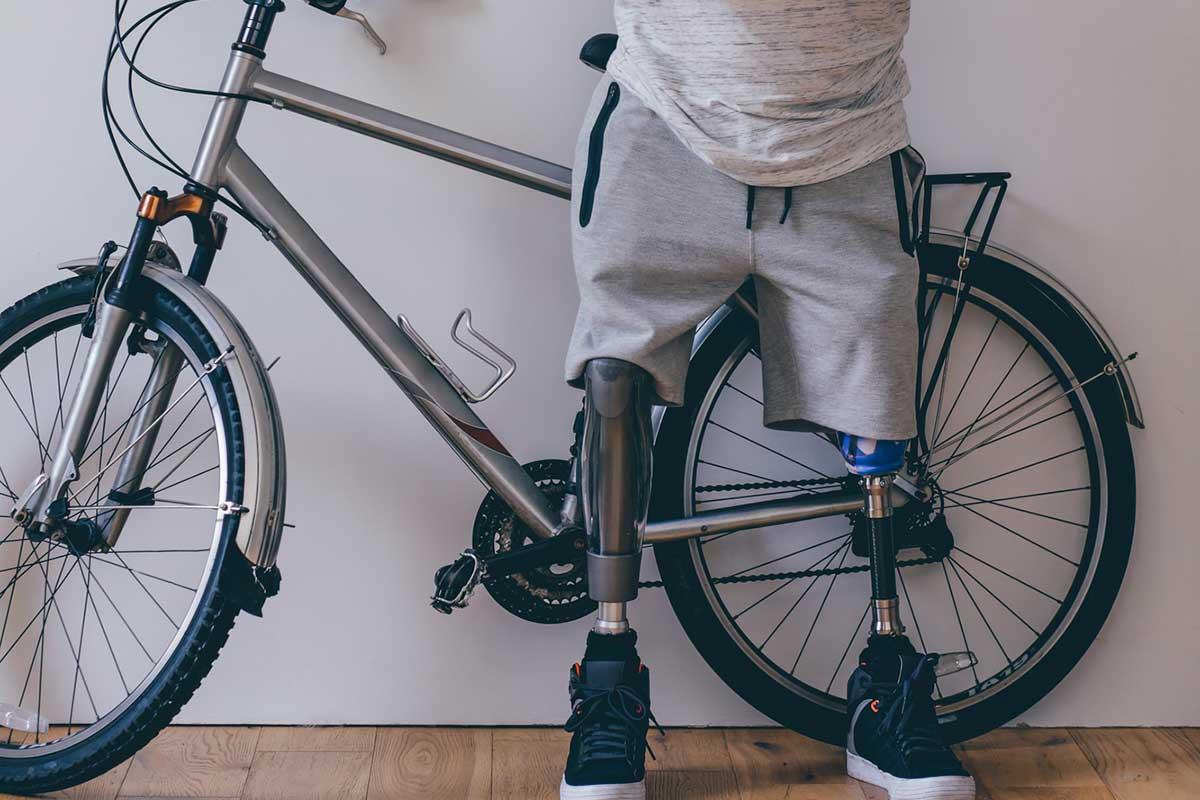The loss of a limb, hand or foot is one of the greatest challenges a person can face in life. Until recently, amputees have had to try to adjust with the assistance of primitive, uncomfortable and marginally useful prosthetics.
Today, new technologies, materials and manufacturing processes have developed prosthetics that are much more functional, practical and comfortable to wear. Yet many of the same problems associated with wearing a prosthesis still persist, and not only contribute to discomfort and a loss of utility but cause some amputees to stop wearing them altogether. Here are some of the most frequently encountered issues and possible solutions.
A Guide To Conquering Common Prosthetic Problems
Phantom Pain
A very common but mysterious phenomenon experienced by amputees is phantom sensations, the feeling of pain or discomfort in a leg or arm that is no longer there. It isn’t known for sure what causes this pain, but researchers suspect the nerves are still sending messages to the brain as if the limb were still there. The unpleasant sensations can be made worse by poor artificial limb fit, being tired or stressed, poor circulation, and weather changes. Phantom pain can be relieved with massage, a warm bath, flexing the muscles in the limb, and medication.
Skin Irritation
Amputee skin problems like rashes, skin irritations, itching, allergies, and discoloration are very common among prosthetic users. Fortunately, most of these issues can be avoided through the proper and regular use of residual limb skin care such as keeping the area clean with soap and water and sanitary wipes and applying topical creams and ointments. A rash from a prosthetic liner could also indicate an allergic reaction and should be examined by a physician, as should an epidermoid cyst if it is causing discomfort.
Socket Discomfort
Although most amputees will experience pain and discomfort with their prosthesis from time to time, poor socket fit and residual limb shrinking can cause the discomfort to be constant and discourage regular use of the artificial limb. A prosthetist can evaluate the specific cause of the problem and take steps to improve the fit of the socket, such as adding specially shaped silicone padding and increasing the size of the weight-bearing area of the residual limb contact surface to distribute the weight more evenly.
Balance & Control Issues
A poorly designed or fitted prosthetic can cause problems with balance and stability while walking or standing, limit the range of limb mobility, and lead to back and hip pain. A prosthetic user experiencing these problems should visit their prosthetist for a reevaluation and adjustment.
Insufficient Prosthetic Training
Learning to live with a prosthetic limb takes time and patience and, more importantly, training in its proper use and care from a professional. Those who don’t receive this training when they are fitted with an artificial limb will be more likely to experience problems with discomfort and control, leading to frustration and a refusal to wear the prosthesis.
Psychological Issues
Losing a limb and having to wear a prosthesis can have a severe impact on an amputee’s mental, emotional and social health. The perceived stigma associated with wearing an artificial limb can lead to low self-esteem and poor body image, increased stress, social isolation, anxiety and depression. They might also experience discrimination and bullying because of their disability. Time and adaptation can eventually alleviate these issues, but those experiencing these feelings should consider counseling from a mental health professional.
Traveling With Prosthetics
Long-distance travel presents special challenges for people with artificial limbs, including airport security, packing necessary accessories, and securing sufficient physical space. Amputees boarding a flight can expect to go through a more thorough TSA search, so they should inform the agents of the prosthetic immediately upon arrival at the checkpoint. Sitting in one position for long amounts of time on a trip can increase blood clot risk, so prosthesis users should try to book seats with extra legroom so they can stretch out and move the limb occasionally during the trip. The prosthesis should be thoroughly cleaned and deodorized before departure.
Residual Limb Congestion
Another consequence of poor socket fit is congestion. This can occur when the attachment point of the prosthesis fits too tightly around the end of the residual limb and restricts the flow of blood, while also leaving a space between the limb and the lower contact point of the prosthesis socket. This can cause the limb to swell and fill up the empty space. Left unresolved, congestion can cause the swollen flesh to become very hard, reddened and painful.
Adductor Roll
This condition occurs when the muscles of the amputated limb haven’t been secured in place during surgery to remove the limb, or they have become unattached later on. This causes the loose ends of the muscles to retract upward into the stump, creating a swollen and misshapen surface that can be hard to fit properly into a prosthesis socket. Surgical procedures are available that can correct this condition to achieve a properly fitted prosthesis.
Cleaning & Hygiene
Prosthetic limb socket attachments must be kept clean and dry to avoid skin problems such as rashes, itching, scaling, dermatitis and stump hematoma. This can be a challenge in some situations, particularly in hot, sweaty weather. Prosthetic liner hygiene is especially important for preventing infections that cause abscesses, furuncles, cellulitis and for preventing one of the most common complaints associated with using an artificial limb: the unpleasant odor generated by dirty prosthetic liners. Soap and water and other cleaning products often aren’t effective enough at eliminating the germs and bacteria that cause prosthetic sleeve odors and amputee skin problems, and in-clinic sterilization is expensive.
The Rapid Ozone Sleeve Sanitizer (ROSS) developed by TriOx LLC offers an effective and low-cost alternative in a small tabletop device that can be used at home. The ROSS ozone sterilization process kills 99% of harmful bacteria and can be completed in as little as 10 minutes, leaving prosthetic liners clean, fresh-smelling and ready to wear. ROSS can be used for all liner makes, types and sizes.
Contact our team today to learn more about how ROSS can work for you.


